Last updated on October 18, 2023
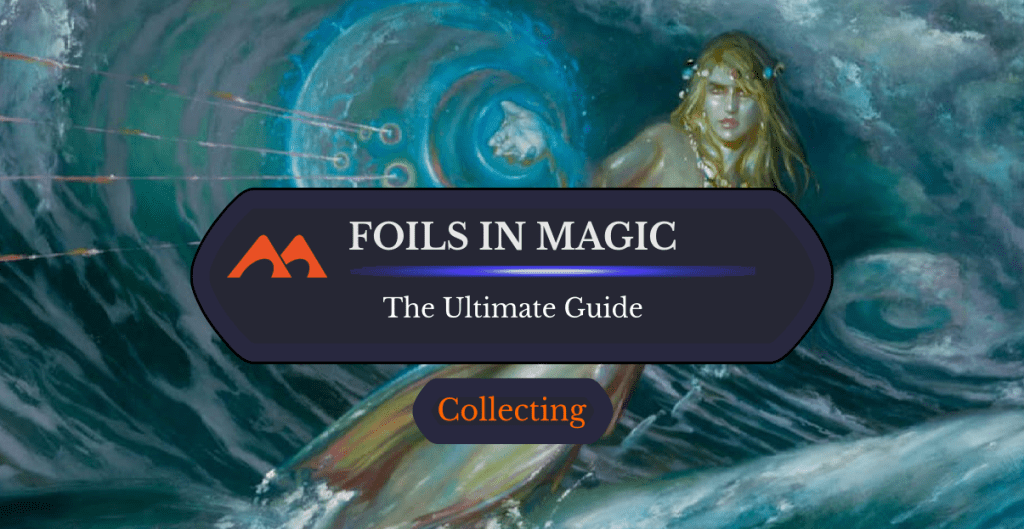
Foil | Illustration by Donato Giancola
Like most primates, humans are easily enthralled by shiny objects. Magic has been making shiny (foil) versions of their cards since 1998, and it’s been a core part of this game’s addictive appeal ever since. Any player who’s cracked a pack and found not just a chase rare, but a foil chase rare has been searching for that high ever since.
Foil cards have gone through stylistic iterations throughout the years, and they’ve received a fair share of criticism too. Wonder why? Me too!
What’s a Foil in Magic?
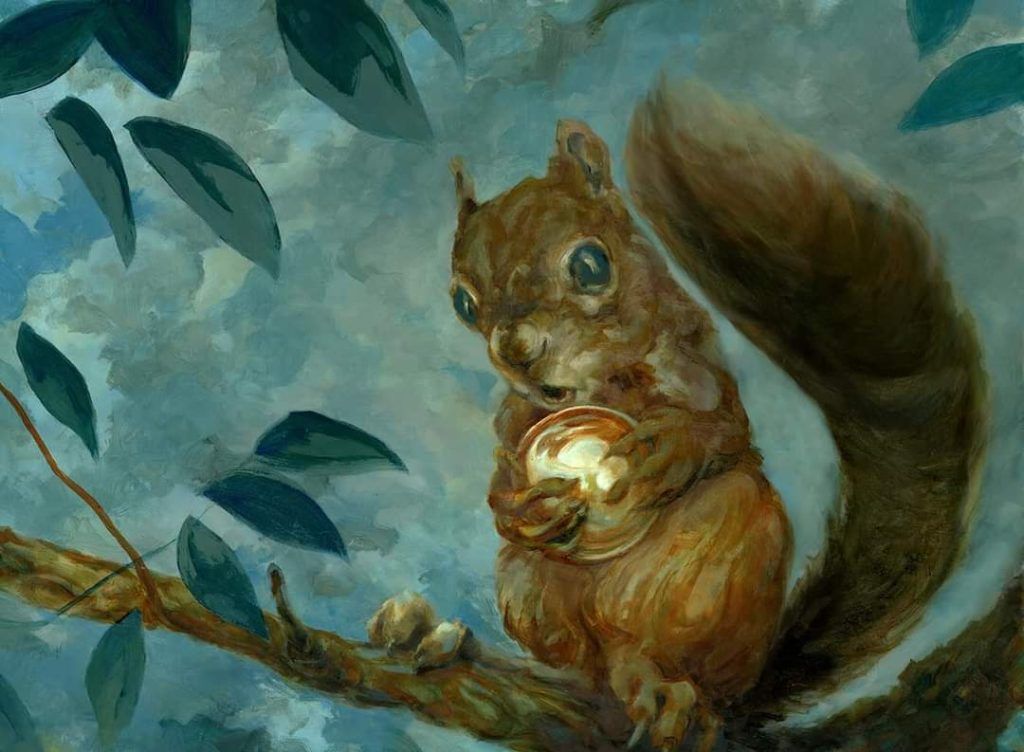
So Shiny (Modern Horizons II) | Illustration by Drew Tucker
Foil cards, known officially in WotC-speak as “premium versions,” are Magic cards with a shiny foil treatment on the art, text, frames, or entire card.
Technically, “foil” is a subset of “premium,” a category that includes non-foil cards like promotional prerelease gold-stamped cards, Promo Pack-stamped cards, or things like the full art Doom Blade.
When Were Foils Introduced?
The first widely-available premium foil card was Lightning Dragon, a prerelease promo for Urza’s Saga. From Urza’s Legacy onward, most standard sets include premium foil printings of every card in the set.
What Are the Different Types of Foils?
Not all foils are created equal. Over the years, WotC has developed and produced a few different types of foil treatments.
Pre-Modern
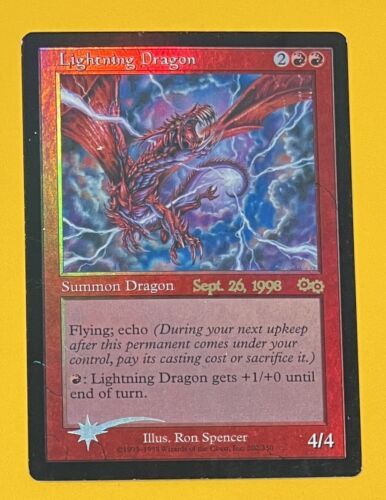
The original foil style, known as pre-Modern, gave a foil treatment to the card’s frame, art, and text. Promotional foils would include the WotC shooting star logo.
Traditional
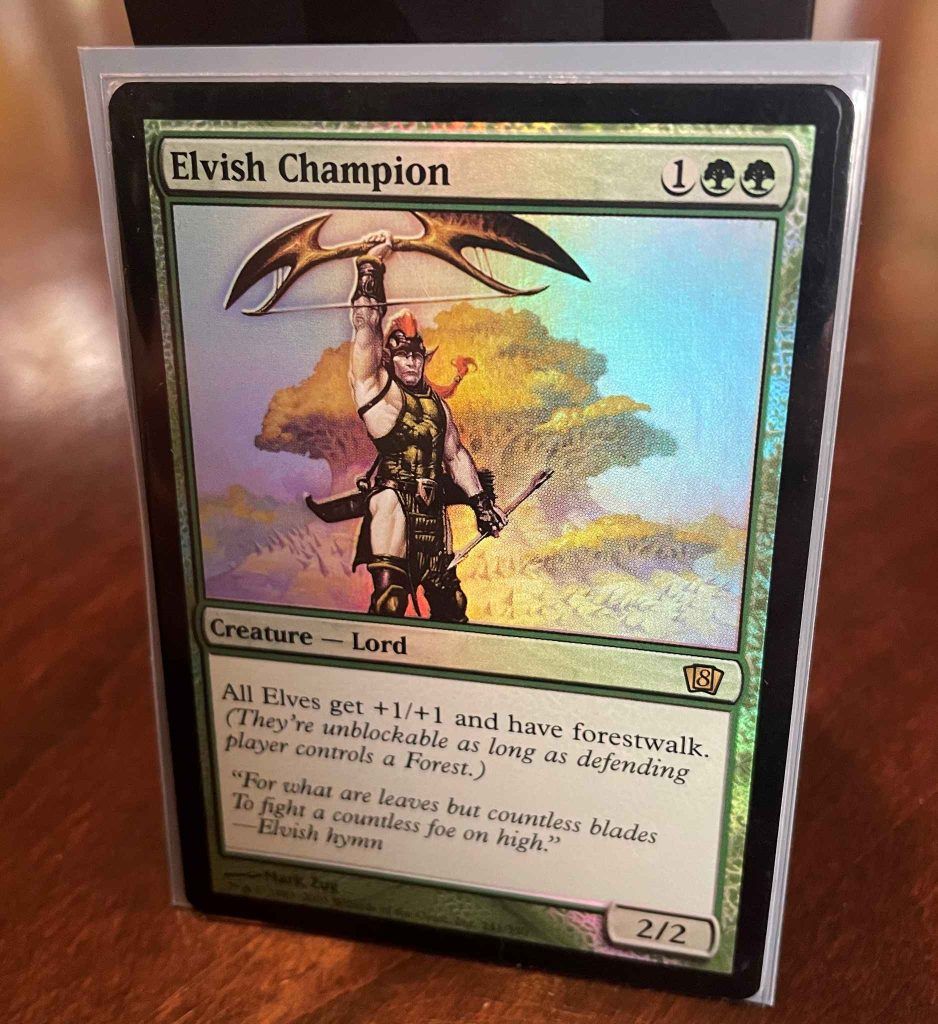
After 8th Edition, a new foiling style was introduced alongside the new Modern card frame. These foils have a rainbow effect covering the entire card. They also receive an extra layer of “white under-print plate,” which highlights certain aspects of the art. Instead of four-color printings, a traditional foil card takes eight or more to account for printing over this WUP layer.
Because of the foil laminate present in this era, these cards are not fully recyclable.
From the Vault

Magic introduced the From the Vault series in 2008. Each FTV set contained 15 premium foil versions of cards with a common theme (for example, Dragons or Angels). These premium cards were printed on a foil stock twice as reflective as the original, giving these cards an intense rainbow effect and a stiffer feel than traditional cards. Despite the increased sturdiness, these foils are known to curl significantly.
Foil-etched
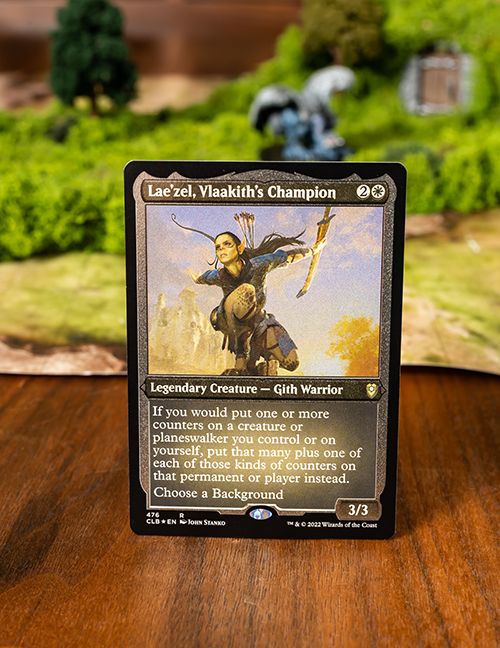
Foil-etched cards have taken off since their release with Commander Legends. Foil-etched cards are darker but sparkle in the light. Instead of a foil laminate layer, they use a sparingly-applied metallic paint to highlight specific parts of the cards. In Modern Horizons 2, the foil-etching process was used to print foil versions of retro cards that Wizards didn’t have the original WUP treatments for.
Silver Screen
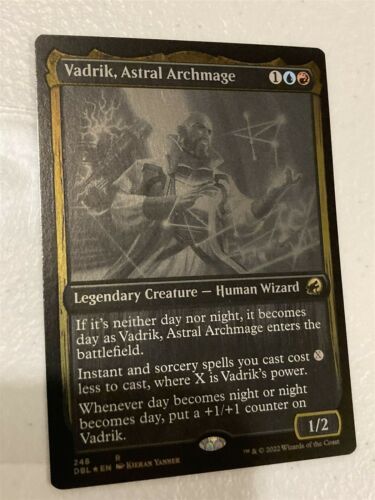
Silver screen foiling was used in Innistrad: Double Feature, and it hopefully won’t return. Instead of the regular rainbow treatment, a silver laminate was applied to try to enhance the black-and-white, “old horror movie” aesthetic of the set. Unfortunately, the heavier laminate layer darkened the foils from this set significantly, almost erasing the artwork on some.
Neon Ink
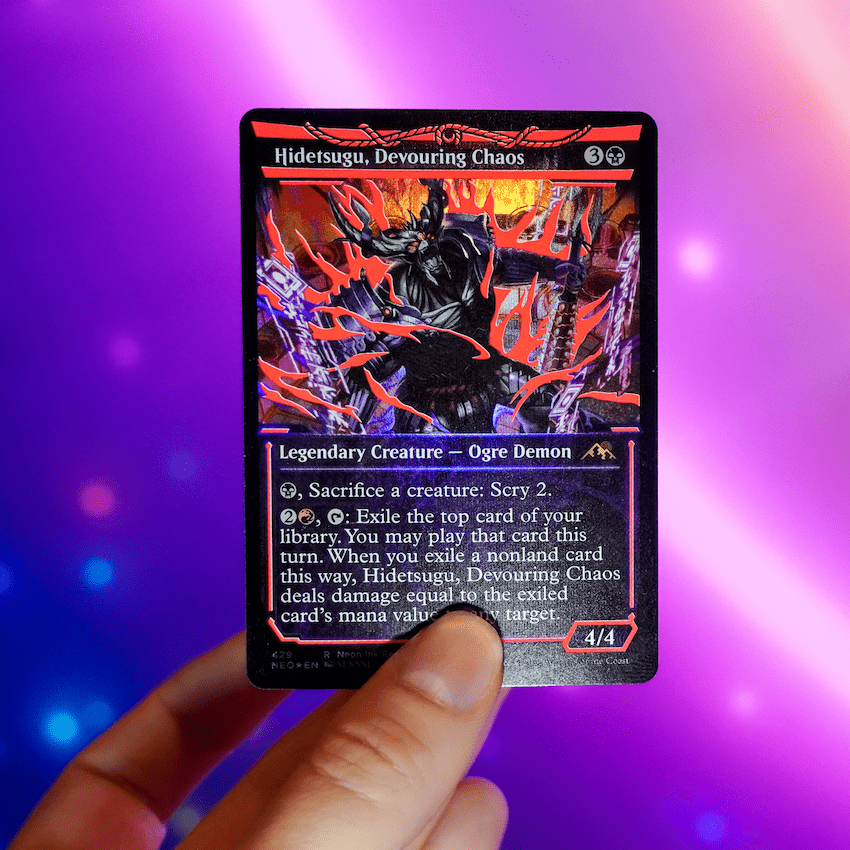
Kamigawa: Neon Dynasty’s Neon Ink foils only appear on a handful of cards. The first Neon Ink treatment appeared on Hidetsugu, Devouring Chaos’s showcase artwork. Four different dazzlingly bright variants exist. Red, blue, and green are found in roughly 1% of the set’s Collector Boosters, with the yellow variant only distributed as a promotional card at Wizards Play Network Premium Stores.
The only other Neon Ink treatments came in Secret Lair Drop: Neon Dynasty Neon Ink Edition (what a mouthful). Ghostly Prison, Hall of the Bandit Lord, Freed from the Real, and Boseiju, Who Shelters All all received variants with bright yellow ink streaked throughout the artwork.
Gilded Foil
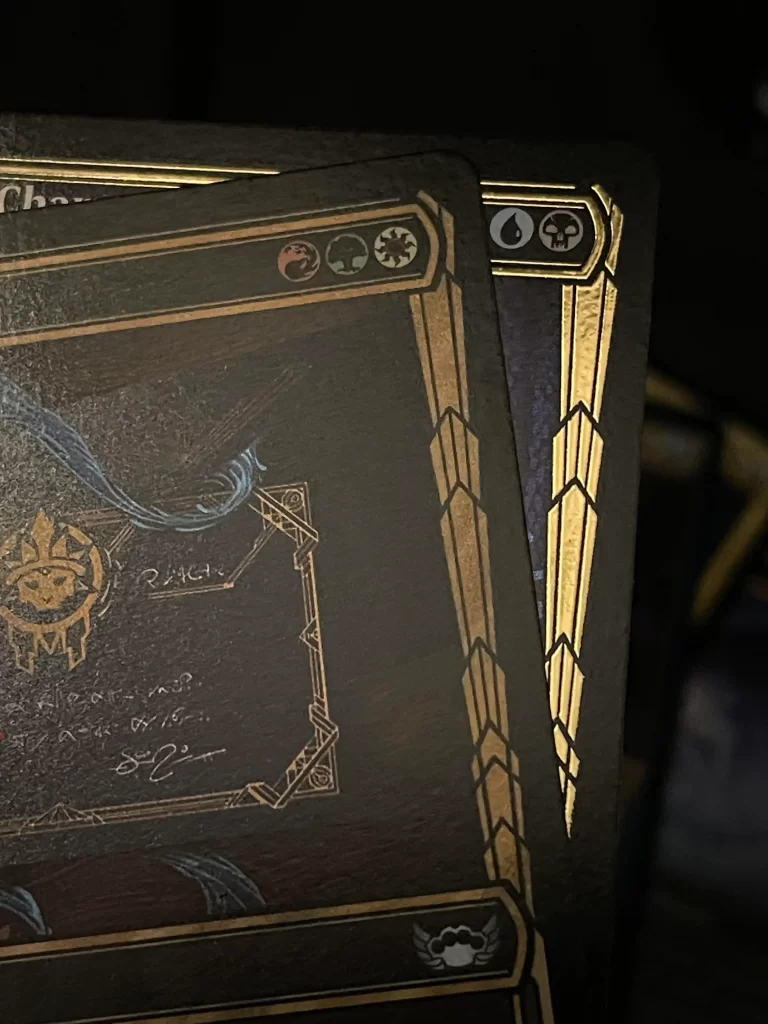
Streets of New Capenna’s Gilded foil variants have an opulence about them befitting a set themed around luxury and vice. The alternate art Gilded foil cards have an embossed golden frame, creating a smoothly raised foiling. The cards #D effect is subtle enough to keep the cards legal in sanctioned Magic formats.
Galaxy Foil

Galaxy foils will be released with Unfinity on October 7, 2022. They haven’t been spoiled yet, but they’re reported to look like “stars in space.” As opposed to stars on the ground, I suppose.
Surge Foil
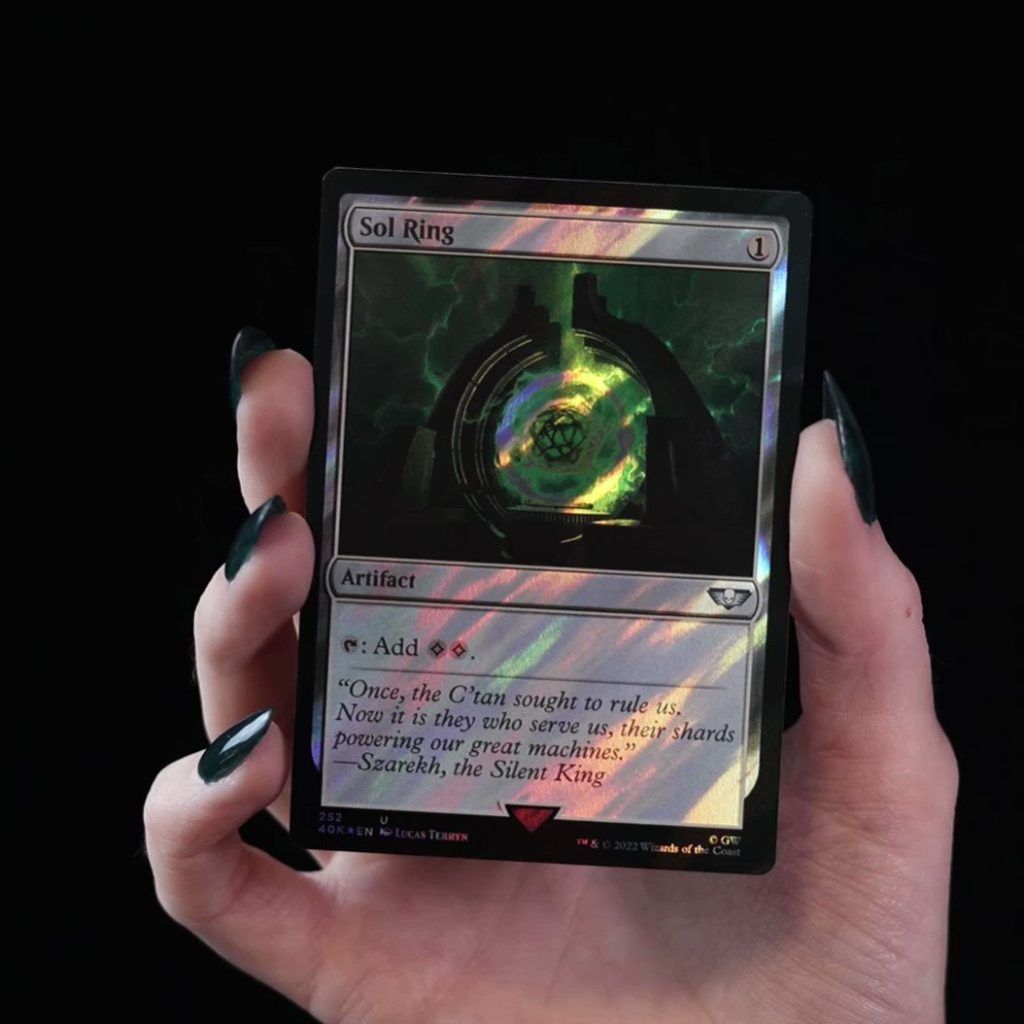
The Warhammer 40,000: Commander Decks’ Collectors versions will include Surge foils cards, which look like the rainbow effect on the From the Vault series.
Textured Foil
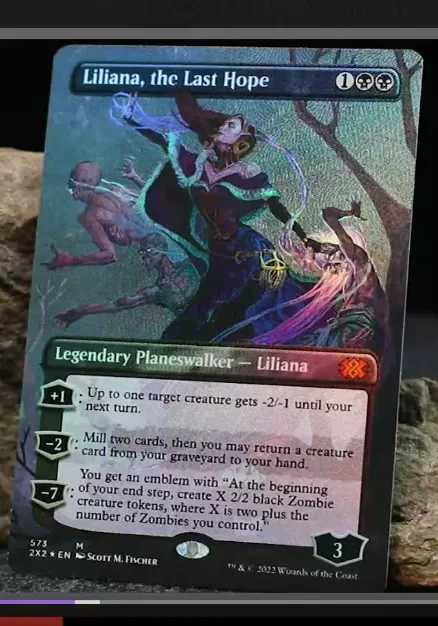
Textured foils evoke the holographic nature of those old Pokémon cards from our childhood (or maybe just mine). These totally-embossed foils appeared first in Double Masters 2022, and then in Dominaria: United. The textured effect gives the foils some appearance of movement. They honestly feel satisfying, too. The texturing is subtle enough that they’re playable in sanctioned Magic formats.
Ampersand Foil
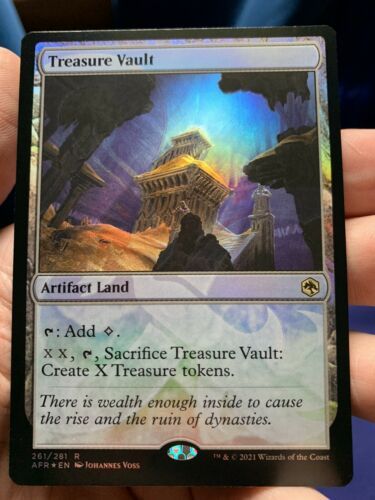
The incredibly rare Ampersand foils appeared on a small number of foil Dungeons and Dragons: Adventures in the Forgotten Realms (another mouthful) rares and mythic rares. They feature a subtle D&D ampersand logo layered in the foiling across the entire card.
Are Foils More Rare?
Typically, yes. Foils are rarer than their non-foil counterparts. Foil cards were originally inserted randomly into Draft Boosters and had a 1:67 chance of appearing in packs. From Core Set 2020 on, the drop rate for foils was increased to 1:45.
Two new types of boosters were introduced in 2019.
Collector Boosters were introduced in Ravnica Allegiance and made a regular part of sets from Throne of Eldraine onwards. Each Collector Booster includes one rare or mythic with extended art, one foil mythic or rare, nine foil commons and uncommons, three special-frame cards (like showcase frames and Gilded foils), and one ancillary card (from a planeswalker deck or Commander deck, typically).
Set Boosters, on the other hand, are a sort of midground between Draft and Collector packs. They include 14 objects, 12 of which are magic cards. Each pack contains one Art card and one land with three commons or uncommons that share a linked theme. They also include one common or uncommon with a variant treatment, two wild cards (anything from common to mythic), one guaranteed rare (with a roughly 13% chance of being a mythic), one foil of any rarity, and one marketing or token card. The marketing card has a 25% chance of being replaced with a card from The List, old cards that have received reprints in their original likenesses.
How Often Do You Get a Foil in a Pack?
Foil cards have different drop rates depending on the pack. Draft Boosters have a 33.3% chance of including a foil, while Set Boosters come with at least one guaranteed foil. Collector Boosters are chock full of foils.
Before Time Spiral, the foil card in a Draft Booster would always replace a card of the same rarity in that pack. From Time Spiral onward, the foil card would always replace a card in a common slot, regardless of the foil’s rarity. This means that a single Draft Booster could contain two, even three rares in some edge cases.
Are Foil Cards Legal?
Foil cards printed by Wizards of the Coast are legal in officially sanctioned Magic formats. Foil proxies and foil alters aren’t allowed in official formats, but your friends might be fine playing with them for casual games.
Are Foils Valuable or Worth More?
Foils are usually worth more than their non-foil counterparts. The increased drop rate of foils from 1:67 to 1:45 and the release of Set and Collector Boosters have dropped the average price of new common and uncommon foils significantly. After a Standard set’s release, foil versions of the unplayed commons and uncommons rarely rise above the price of their other printings. Foil variant printings have replaced the traditional foil as the chase cards for most releases.
As sets rotate out of production, their foils gradually increase in price. The oldest foils, from sets like Urza’s Legacy and 7th Edition, frequently run for more than $300 a pop! It all depends on the card’s age, its viability in formats, and the number of reprints it’s received over the years.
Are Foil Lands Worth Anything?
The foil versions of land cards are typically more expensive. As sets rotate out of production, their foils will rise in price as the cards become rarer. For example, a non-foil basic Swamp from Odyssey runs about $0.75, but a foil will be at least $5 (depending on the condition, of course). By contrast, a non-foil basic Swamp (not the stained-glass variants) from the recently released Dominaria United set runs $0.25, while its foil version is only $0.35.
If you’re interested in foils of your favorite basics, get them while the set’s still out and before the price jumps.
Does Every MTG Card Have a Foil Version?
No. All cards printed before Urza’s Saga were printed before the foiling process was introduced. While some have seen reprints in sets with foil versions, many haven’t. That’s tragic! Imagine a foil printing of Opal Archangel or the Mirage Dark Ritual.
Are There Foils on Magic Online?
Foils are available in MTGO. Opening packs in MTGO is meant to replicate the real thing, and the real packs have foils! The foils also affect the pull rates in packs.Opening Draft Boosters wouldn’t be exactly the same without them.
Why Are Foils Cheaper on Magic Online?
Foils are generally cheaper on MTGO because their demand is weaker online. MTGO’s foils suffer from the same supply-inflation that real foils did when Collector Boosters and Set Boosters were introduced. A higher frequency of foils online means a lower value for them overall. Redeeming a full foil set on MTGO for the real thing used to be the main way retailers and card stores could acquire foils. With the increase in foils available through packs, there’s no need for the MTGO redemption route.
Are There Foils in MTG Arena?
No, there are no foils in MTG Arena. Instead, players can pay for cosmetic card frames, animations, pets, avatars, or deck sleeves to make their decks shine.
Problems with Foils
Foils aren’t without their criticisms. Different issues have persisted or emerged with the types of foiling throughout the years.
Variability
One of the more recent issues is the variability the new foiling processes produce. Cards can receive a thicker or thinner foil layer, and you’ll sometimes be left wondering whether a card is truly foil, or just speckled with some reflective dust.
Warping
Warping, or “pringling” as I like to call it, occurs when the back of the card expands or contracts because of a humid environment. The front side of foil cards is coated in Mylar, which doesn’t contract, so the card warps and bends around itself.
Marked Cards
Foils catch dust much easier than non-foil Magic cards. Even when stored in sleeves, they show the slightest specks of dust damage much clearer than a regular card. This leaves them with a cloudy, white-and-gray look. It can be so egregious in some cases that they’ll be flagged as Marked Cards by official Judges.
Misprints
Sometimes, various errors occur during the production process that can result in off-center or mis-inked foils. Sometimes, a card can be so off-center that the next card on the print sheet can be seen. A layer or two of ink could be skipped, resulting in white text with no drop shadow, or black text with no white edging.
Some folks call these misprints a problem, but others disagree! These unique mess-ups are a fun part of collecting, and even sell for more than their regular versions in some cases.
How Do You Uncurl a Foil Card?
So, you live in some aggressive humid or dry environment and your cards just won’t stay flat. What do you do? There are a few options. They won’t work in every case, and each of these comes with the risk of damaging your cards. Proceed with caution.
Rehydrating
A foil will need to be rehydrated if it begins to warp towards the cardboard backing. To mitigate this, you can build a “hydration chamber” to raise the humidity of a controlled environment, rehydrate the card, then weigh it down to return it to its original shape.
Building a controlled humidity environment sounds daunting, but it's fairly simple. An old to-go box or Tupperware container will do fine. Wet a paper towel and cover the base of the container with it. Then, find a waterproof base for your card (the plastic top of a pencil case, one of those clean cheap plastic paint pallets, almost anything that won’t transfer water to your foil will work).
After sealing the container, wait about 30 minutes, until the card starts to uncurl on its own. Remove it from the hydration chamber, and let it acclimate to the air and “dry” a bit. Once it’s dry, drop a heavy book on it and leave it overnight.
Dehydrating
Should the high humidity cause your cards to curl towards the art side, you’ll need to dehydrate the foils. There’s one easy way to accomplish this: silica gel packets. Take a handful of foils you want to uncurl, toss them in a Ziploc-type bag with a Silica packet, and leave overnight. The packets should dry out the humidity inside the bag and hopefully contract the cardboard enough so that your cards can be easily uncurled by applying a heavy book once removed.
How Do You Foil Your Own Cards?
Foiling your own cards can be a rewarding experience to personalize your decks. It can push MTG enthusiasts into hobbying activities not typically associated with Magic. Players and artists modify the art on Magic cards directly with paint or ink, but some also use custom foil sleeves to customize their cards.
Etsy has a huge selection of independent retailers selling all sorts of foil-altered cards. Sites like Altersleeves.com sell card sleeves tailored to specific cards, giving them a variant artwork appearance.
How Do You Foil Peel Cards?
Making a foil-peel alter involves gently peeling off the art face from a foil card and applying it to another card. Effectively, you’re cutting one up and gluing it on top of the other.
There are many different processes for foil peeling, but they all follow the same general principles.
First, soak the foil card that you want to peel. After one to two minutes, remove it from the water and gently peel back the art side, being careful not to tear the art. Once you have a clean tear, rub down the white inner layer to remove the rough paper and cardboard remnants.
Next, dry the card in a paper towel. Using an X-ACTO-type knife, begin cutting the art you want from the foil layer.
Once you’ve removed the art, transfer it to the new card. Use cotton swabs to sparingly apply Elmer’s glue to the card. Less is more! It may dry clear, but it won’t dry flat if you’ve over-glued it.
Are There Fake Foil Cards?
There are fake foils, just like there are fakes of traditional Magic cards. Counterfeit foils are a little harder to spot since the foil layer means they can’t pass the “light test.” One of the best ways to tell is to use a loupe, a small magnifying glass typically used by jewelers. Take a close look at the green mana symbol on the back of the card. There should be a clump of small red dots in an upside down “L” shape. If this “L” is missing, or the dots are all over the place, the card may be fake!
Where Can You Buy Foil Proxies?
Proxies differ from fakes in that they aren’t trying to hide the fact that they’re fake (they shouldn’t be, anyway).
Proxyking.biz has proxies for just about every card you’d ever need, and in multiple printings. Why get a regular foil Blightsteel Colossus when you could get the Double Masters Box Topper variant?
Wrap Up
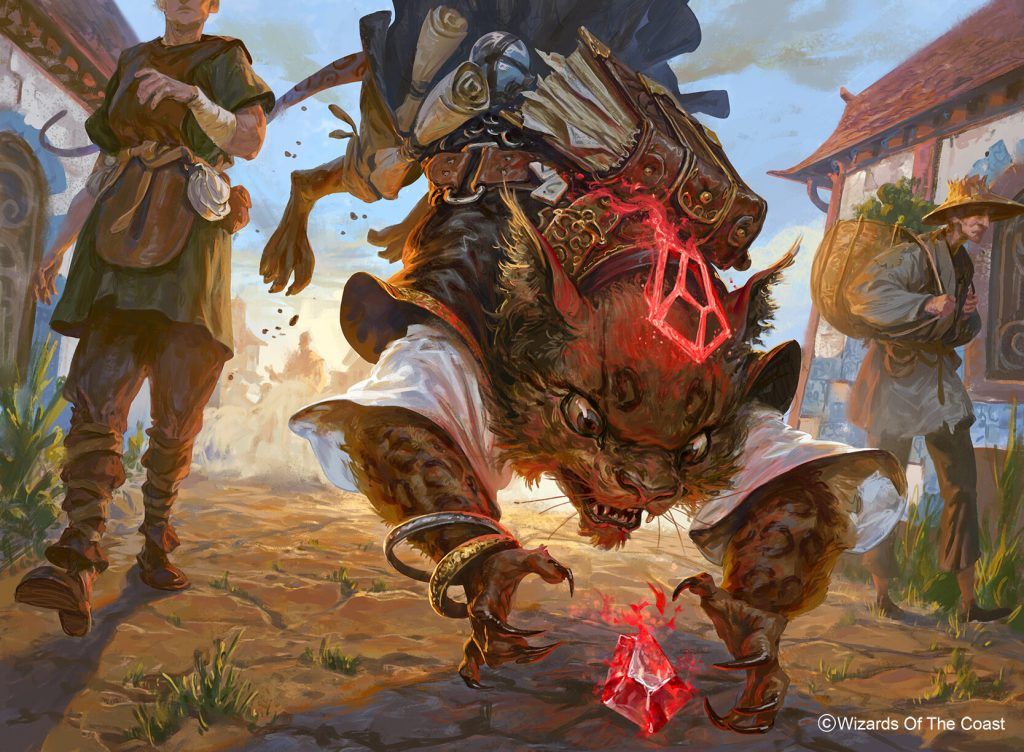
Shiny Impetus | Illustration by Filipe Pagliuso
When I think back to all the packs I’ve cracked in my day, the foils are always what I remember most. Even when they aren’t great cards, I still get excited thinking about opening a foil Mardu Hateblade or Runic Repetition. They add a layer of value and excitement to collecting that would be missed if it were gone. Besides, they’re a great way to pimp out any deck you’re looking to flex at your local game store.
What are your favorite types of foils? Was the silver screen printing that bad? Are there any better ways to uncurl your foils? Let me know in the comments, or over on the Draftsim Twitter.
Thanks for reading and keep cracking!
Follow Draftsim for awesome articles and set updates:

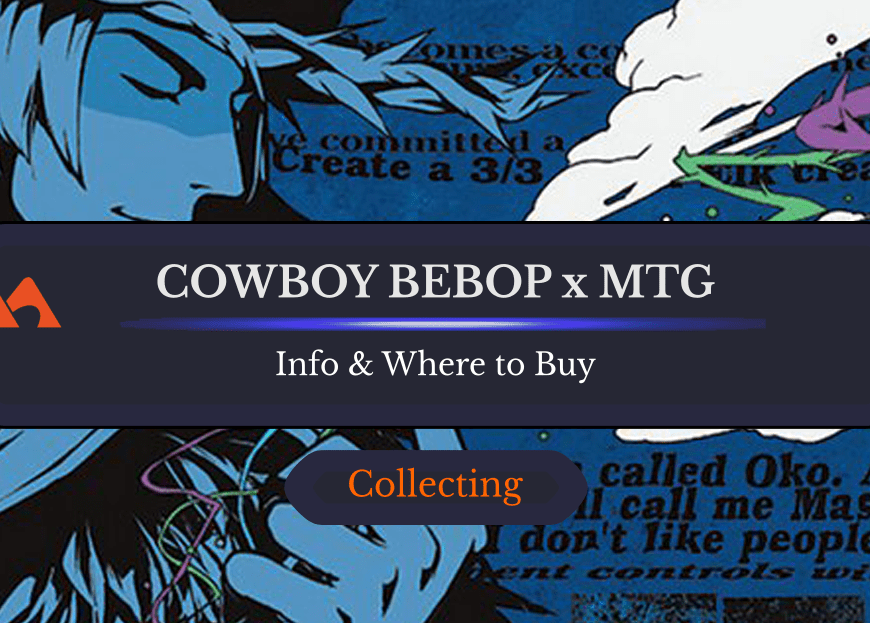
Add Comment